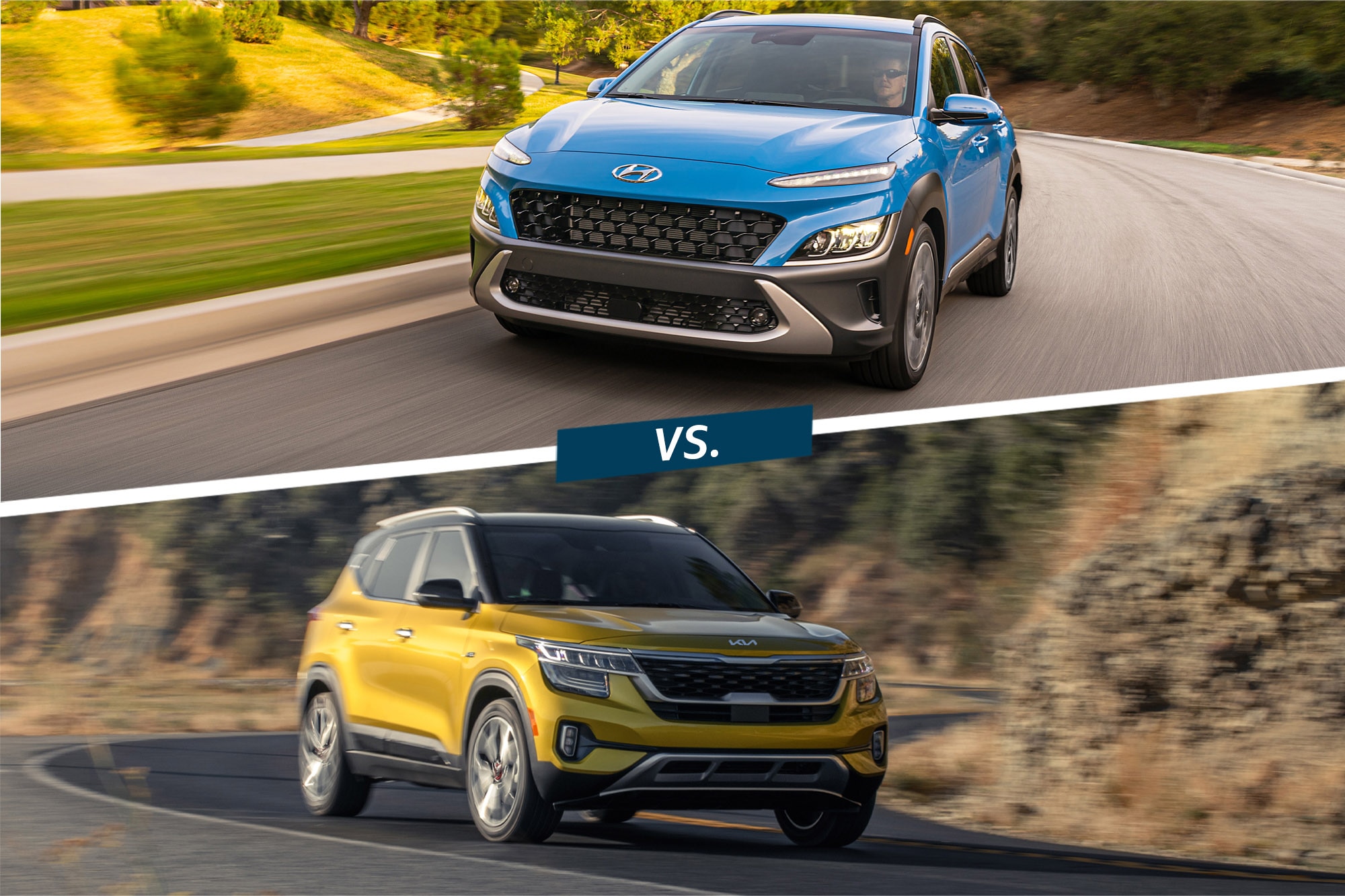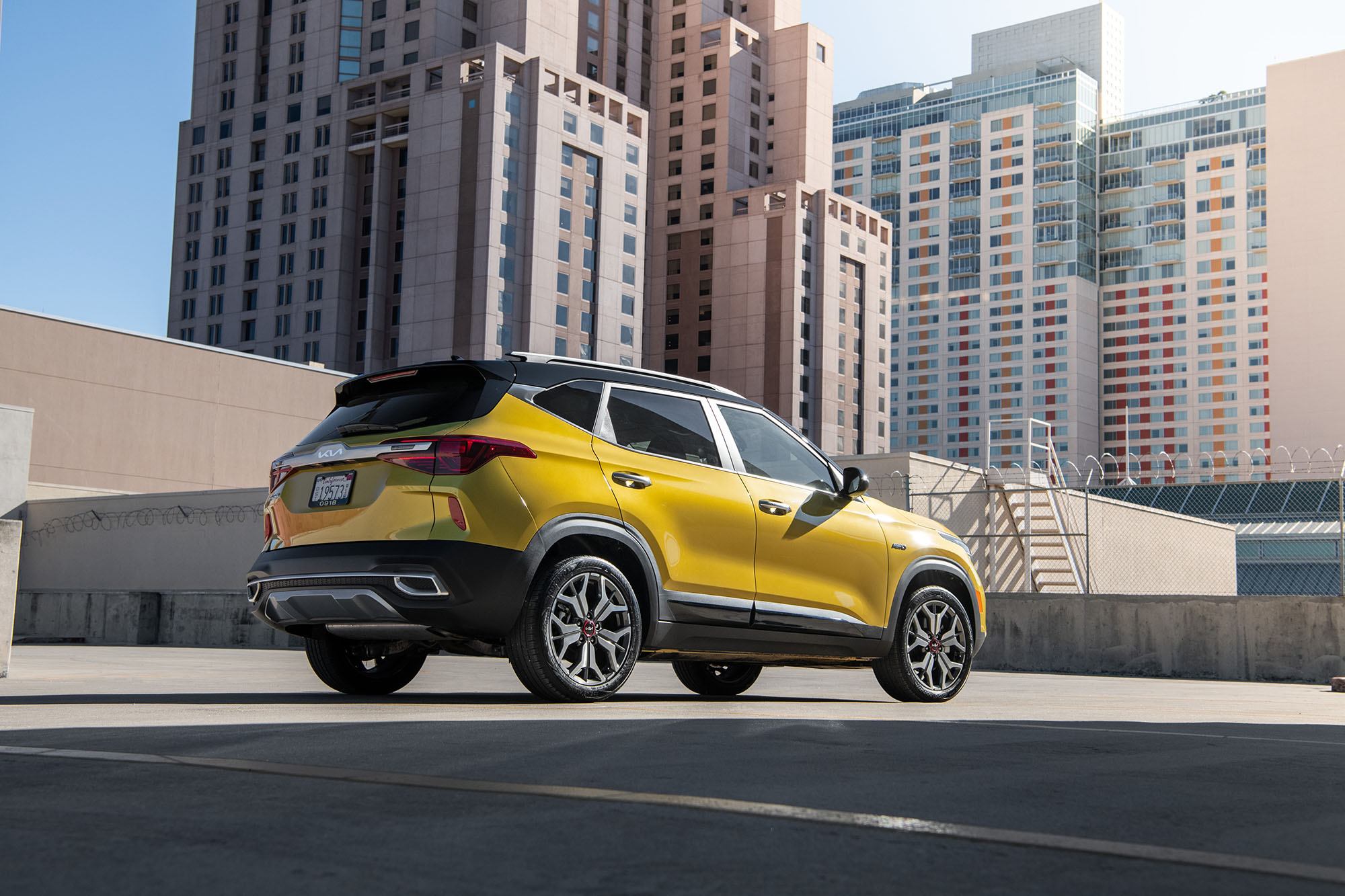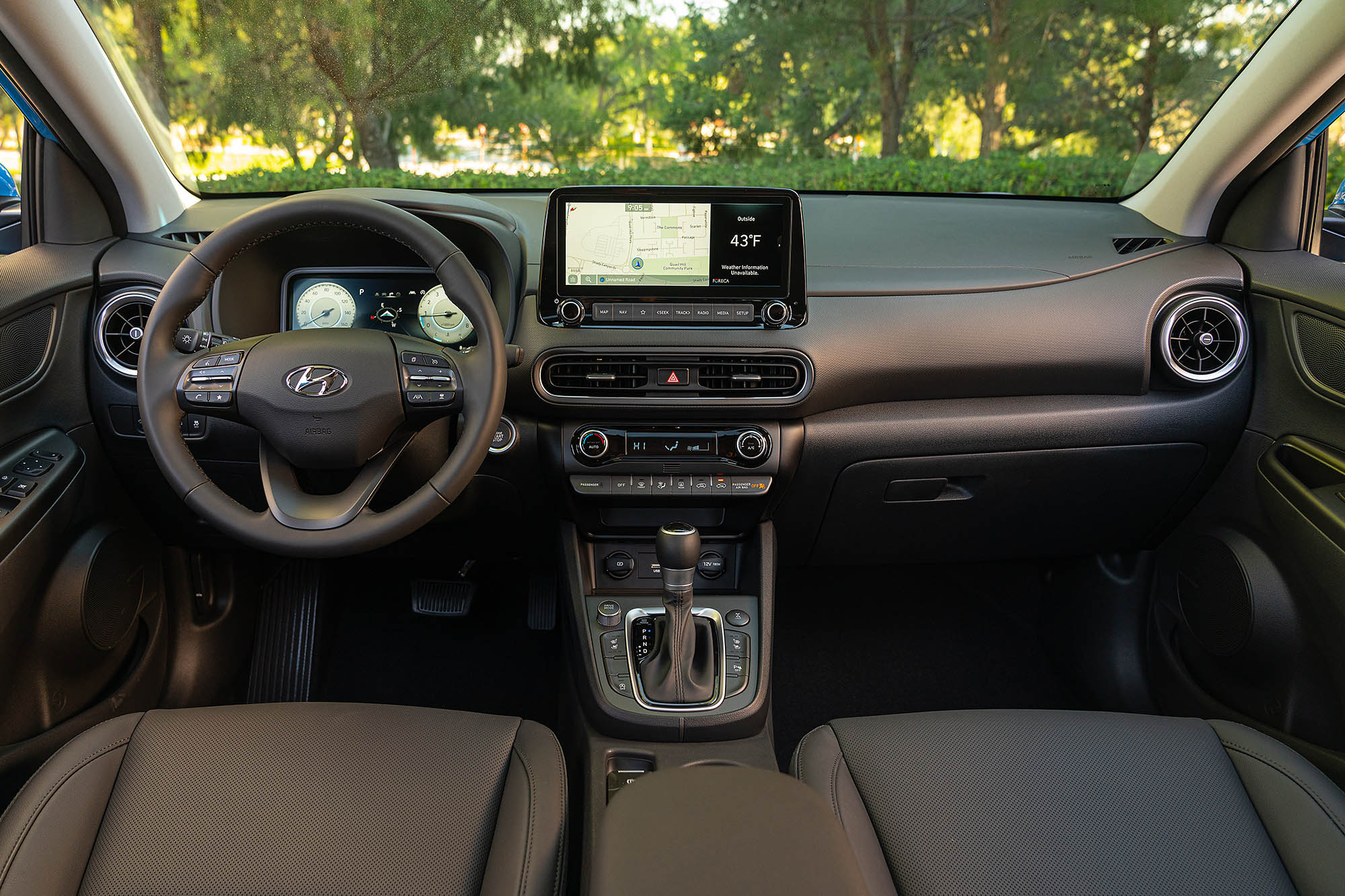Compared: 2023 Hyundai Kona vs. 2023 Kia Seltos
Hyundai gives shoppers plenty of options, while Kia reins in its offerings.
 Hyundai | Kia
Hyundai | Kia
The 2023 Hyundai Kona and Kia Seltos both vie for ground in the affordable subcompact SUV space and have much in common. Born of the same parent company, the two ride on the same platform, share the same entry powertrain, and start at similar prices.
Hyundai's lineup is more diverse, with a couple of performance options as well as an EV. Kia, meanwhile, keeps things relatively simple.
 Hyundai
Hyundai
The 2023 Hyundai Kona Boasts the Lower Starting Price
The entry Kona is powered by a 2.0-liter four-cylinder engine with 147 horsepower and starts at $23,000. Then there are the sporty models: the $29,000 N Line, which packs a 195-hp turbo 1.6-liter four-cylinder; and the Kona N, which is sort of in a class of its own with 276 horsepower on tap and a base price of $36,000.
Hyundai also offers a 201-hp EV option that provides 258 miles of range for those who have $35,000 to spend. Where available (on all but the Kona N and Electric), all-wheel drive (AWD) costs $1,500.
 Kia
Kia
The base 2023 Kia Seltos starts a bit higher, at about $25,000. Lower trims employ the same four-cylinder as the entry Kona (minus 1 horsepower), while the top two use a 175-hp turbo 1.6-liter four. The opening price for the latter engine is $29,000.
AWD comes standard across the range, apart from the one-step-up-from-base Seltos S, where it'll cost you $1,500 more.
 Hyundai
Hyundai
The Kia Seltos Is Significantly Roomier Than the Kona
The base Kona and Seltos make do with an 8.0-inch infotainment screen, but higher trims either offer or come standard with a 10.3-inch unit. That said, only Hyundai makes available a 10.3-inch instrument cluster, whereas the top-tier Seltos boasts a 7.0-inch display in front of the driver.
All Hyundai Konas come with blind-spot monitoring, something Kia reserves for above-base trims, but then all Seltos models boast automatic high-beams, which several Konas lack. No Seltos offers seats with ventilation or leather upholstery, but a couple of high-level Konas do.
As for passenger comfort, the two are pretty evenly matched in front-seat space, but the Seltos has a roomier back seat — 38.0 inches of rear legroom versus the Kona's 35.2 inches — and a larger cargo hold — 26.6 cu-ft versus 19.2 cu-ft with the rear seats up. With the back seats folded, the Seltos' cargo space expands to 62.8 cu-ft. That's significantly roomier than the Hyundai Kona's 45.8 cu-ft.
 Kia
Kia
The Kona Bests the Seltos in Efficiency
Hyundai takes this category, largely due to its EV model, which gets 134/106/120 MPGe city/highway/combined.
As for the gas-powered lineup, the base 2.0-liter Kona returns an EPA-estimated 30/35/32 mpg. The turbocharged Kona N Line sees 29/35/32 mpg in front-wheel-drive form. When all four wheels are in play, their EPA ratings drop to 28/33/30 mpg and 27/32/29 mpg, respectively.
Unsurprisingly, the performance-oriented Kona N is the least efficient of its lineup, with a score of 20/27/23 mpg. It also requires premium fuel, unlike every other gasoline-powered model in this comparison.
Kia's offerings aren't far behind Hyundai's. The front-drive Seltos S sees 29/35/31 mpg, whereas the other 2.0-liter models — which come standard with AWD — return 27/31/29 mpg. Choosing a high trim level with the 1.6-liter lowers fuel economy to 25/30/27 mpg.
All vehicle pricing includes MSRP plus destination charges (set at the time of publication), and will be rounded to the nearest thousand.
Written by humans.
Edited by humans.
 Teia Collier
Teia CollierNative Texan with a love for people, auto, beautiful design and a grand adventure, Teia Collier is an award-winning writer based in the Dallas area. With a background in education, civic service, and public policy, she loves to discover the why behind a thing and to connect people with the best resources to make their lives better. Collier is also a mom of three, addicted to coffee, and the incoming president of the Texas Auto Writers Association.
Related articles
View more related articles